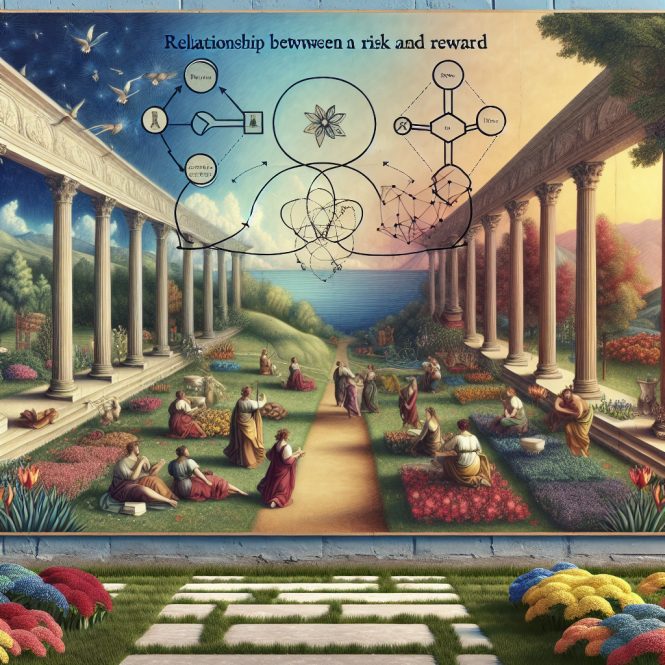
Flash Crash of May 6, 2010: Lessons from Costly Mistakes
Aug 4, 2024
In the vast canvas of financial history, few events are as striking as the Flash Crash of May 6, 2010. Like a bolt of lightning illuminating the night sky, this event exposed the fragility of our modern financial markets and the folly of those who navigate them without wisdom or preparation. As we explore human stupidity and market mechanics, let us don the mantle of the omniscient observer, combining the analytical prowess of a master logician, the historical perspective of a seasoned chronicler, and the sardonic wit of a jaded market veteran.
The Anatomy of a Crash
On that fateful Thursday afternoon, the Dow Jones Industrial Average plummeted nearly 1,000 points in 36 minutes, only to recover most of its losses almost as quickly. This violent oscillation sent shockwaves through the global financial system, leaving a trail of devastated portfolios and shattered illusions in its wake.
But what caused this cataclysmic event? Like all significant market disruptions, the Flash Crash was born from a perfect storm of human folly, technological hubris, and systemic fragility.
Ironically, the spark that ignited this conflagration was a large sell order of E-Mini S&P 500 futures contracts by a mutual fund complex. In a twist of fate that would make even the most cynical market manipulator blush, this order was executed using an automated algorithm to minimize market impact. Oh, the delicious irony! An attempt to tread lightly in the markets instead set off a stampede that nearly brought the entire system to its knees.
As the sell order hit the markets, high-frequency trading algorithms, those digital piranhas ever-hungry for the slightest price discrepancy, sensed blood in the water. In a cascade of automated trading that would make a Rube Goldberg machine look simplistic, these algorithms began to buy and then quickly resell the futures contracts, passing them back and forth like a hot potato in a kindergarten game gone awry.
The Folly of the Uninformed
As panic spread through the markets faster than gossip at a small-town church social, the uninformed masses reacted with all the grace and poise of a drunken elephant on roller skates. Retail investors, those perennial sheep ready for shearing, began to dump their holdings en masse, driven by that most primal of financial instincts: blind, unreasoning fear.
One can almost hear the ghost of H.L. Mencken chuckling from beyond the grave, his famous quip ringing true once more: “Nobody ever went broke underestimating the intelligence of the American public.” Indeed, on that day, many did their level best to prove him right.
Consider the case of poor Mr. Johnson (name changed to protect the foolish), a dentist from Peoria who had recently taken up day trading as a hobby. Upon seeing the market’s steep decline, our intrepid amateur financier decided this was indeed the beginning of the next Great Depression. With trembling fingers, he liquidated his entire portfolio at the bottom of the crash, locking in losses that would have made even the most hardened Wall Street trader wince.
But Mr Johnson was not alone in his folly. Across the nation, countless others made similarly ill-advised decisions, driven by a toxic cocktail of fear, ignorance, and that most dangerous of financial aphrodisiacs: the belief that one must “do something” in the face of market turmoil.
The Triumph of the Prepared
Yet, as in all significant market dislocations, where there are losers, there are also winners. Those rare individuals who had prepared for such an eventuality, who had steeled their nerves and honed their understanding of market mechanics, were presented with the opportunity of a lifetime.
For instance, the case of Ms. Rodriguez (another pseudonym), a former quantum physicist turned hedge fund manager. Having studied the fragilities inherent in our highly interconnected and automated financial markets, she had positioned her fund to capitalize on such an event. When the crash came, her algorithms began scooping up high-quality assets at fire-sale prices. By the end of the day, her fund had recorded gains that would make even the most jaded Wall Street veteran green with envy.
Or consider Mr. Tanaka, a retired Japanese salaryman who had spent years studying the writings of Benjamin Graham and Warren Buffett. When he saw blue-chip stocks trading at absurd discounts during the flash crash, he didn’t panic. Instead, he calmly placed buy orders, secure in the knowledge that the intrinsic value of these companies hadn’t changed in a few minutes. His cool-headed actions in the face of market madness set the stage for years of outsized returns.
The Lessons of History
As the dust settled and investigators began to piece together the events of that chaotic day, it became clear that the Flash Crash was not without precedent. Indeed, the annals of financial history are replete with examples of market dislocations that separated the wise from the foolish, the prepared from the panicked.
One is reminded of the Panic of 1907, where the great financier J.P. Morgan single-handedly halted a market meltdown by locking the heads of New York’s largest banks in his library until they agreed to provide liquidity to the system. Or the crash of 1929, where contrarian investors like Bernard Baruch made fortunes by shorting the market in the face of irrational exuberance.
As the philosopher George Santayana famously observed, “Those who cannot remember the past are condemned to repeat it.” In the case of the Flash Crash, it seems that many investors had forgotten (or never learned) the lessons of these historical events.
The Role of Technology: A Double-Edged Sword
No examination of the Flash Crash would be complete without a discussion of the role of technology in modern financial markets. Like the sorcerer’s apprentice in Goethe’s famous poem, we have created systems of such complexity and power that they have the potential to overwhelm us.
High-frequency trading algorithms, capable of executing thousands of trades per second, have transformed the market landscape. On one hand, they provide liquidity and tighten spreads, potentially benefiting all market participants. On the other, as we saw during the Flash Crash, they can amplify market movements and create feedback loops that spiral out of control faster than human interventions can respond.
As the ancient Roman philosopher Seneca wisely noted, “It is not that we have a short time to live, but that we waste a lot of it.” In modern markets, where fortunes can be made or lost in microseconds, this waste of time through inadequate preparation and understanding can be catastrophic.
The Regulatory Response: Too Little, Too Late?
In the aftermath of the Flash Crash, regulators scrambled to implement safeguards to prevent a recurrence of such an event. Circuit breakers were introduced, designed to halt trading in individual stocks that experience rapid, significant price movements. Dark pools and other alternative trading systems came under increased scrutiny.
Yet, one cannot help but wonder if these measures resemble closing the barn door after the horse has bolted. As the great speculator Jesse Livermore once observed, “There is nothing new in Wall Street. There can’t be because speculation is as old as the hills. Whatever happens in the stock market today has happened before and will happen again.”
Indeed, while the specific circumstances of the Flash Crash may have been unique, the underlying human behaviours – greed, fear, and the tendency to panic in uncertainty – are as old as markets themselves.
Lessons for the Future: Embracing Complexity
As we look to the future, it is clear that financial markets will only become more complex, interconnected, and driven by technological innovation. In this brave new world, how can investors protect themselves from the fate of the uninformed and stupid who lost money during the Flash Crash?
Paradoxically, the answer lies in embracing this complexity rather than shying away from it. As the polymath Nassim Nicholas Taleb argues in his concept of antifragility, some systems benefit from shocks and disorder. By building robust investment strategies that can withstand—and even thrive in—periods of extreme market stress, investors can position themselves to capitalize on the folly of others.
This might involve:
1. Developing a deep understanding of market microstructure and the role of algorithmic trading.
2. Implementing dynamic hedging strategies that can adapt to rapidly changing market conditions.
3. Cultivating the emotional discipline to remain calm and rational in a market panic.
4. Continuously educating oneself about new technologies and their potential impact on financial markets.
As the ancient Chinese strategist Sun Tzu advised, “During chaos, there is also opportunity.” The Flash Crash of 2010 was undoubtedly a moment of extreme chaos in financial markets. But it was also an unprecedented opportunity for those who were prepared and had the knowledge and the nerve to act decisively.
Conclusion: The Eternal Dance of Fools and Sages
As we conclude our examination of May 6, 2010, Flash Crash, we are left with a profound appreciation for the complexity of modern financial markets and the eternal dance between the fools who are separated from their money and the sages who profit from their folly.
The uninformed and stupid who lost money during the Flash Crash are a cautionary tale, a reminder of the perils of navigating the treacherous waters of the markets without adequate preparation and understanding. Their losses are a testament to the unforgiving nature of finance, where ignorance is punished swiftly and mercilessly.
Yet, we must not forget that there are also winners in every market dislocation, panic, and crash. Those who have taken the time to understand the intricacies of market mechanics have steeled themselves against the siren song of fear and greed and have positioned themselves to capitalize on the mistakes of others.
As we look to the future, with its promise of even greater technological innovation and market complexity, let us heed Benjamin Graham’s words: “The investor’s chief problem—and even his worst enemy—is likely to be himself.” By conquering our emotions, continually expanding our knowledge, and approaching the markets with humility and confidence, we can aspire to be among the wise few who profit from the folly of the many.
Ultimately, the Flash Crash 2010 was not just a technical glitch or a momentary market anomaly. It was a stark reminder of the eternal truths that govern all financial markets: that fear and greed will always hold sway over the uninformed masses, that preparation and knowledge are the surest paths to success, and that in the great game of finance, it is not the fastest algorithm or the most significant bankroll that ultimately triumphs, but the most fabulous head and the most disciplined mind.
Let us resolve not to be among the uninformed and stupid who lose their shirts in the next market upheaval but among the wise and prepared who stand ready to seize the opportunities that chaos inevitably brings. In the words of the immortal Warren Buffett, “Be fearful when others are greedy, and greedy when others are fearful.” Never was this advice more pertinent than during those fateful 36 minutes on May 6, 2010.














